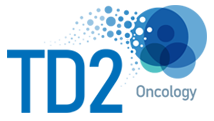Traditional mouse models remain a cornerstone of preclinical oncology research. Syngeneic and xenografts mouse models continue to play a critical role in evaluating tumor growth, therapeutic efficacy, pharmacokinetics & pharmacodynamics, and toxicology. Their reliability, scalability, and extensive historical data make them indispensable tools in drug development.
However, as oncology pipelines increasingly incorporate immunotherapies, bispecific antibodies, and cell-based modalities, additional model systems are needed to evaluate human-specific immune responses. This is where humanized mouse models serve as a valuable complement. By introducing functional human immune components into immunodeficient hosts, these models allow researchers to interrogate human tumor-immune dynamics and immune-mediated safety signals in a way that murine immune systems cannot replicate.
Humanized models may not benefit every program, but they are especially informative for therapies involving:
- T cell-dependent mechanisms such as CAR-T cells and bispecific engagers
- Immune checkpoint blockade and immune-stimulatory agents
- Cytokine modulators or therapies with potential for cytokine release syndrome
- Personalized immunotherapies requiring HLA-specific recognition
- Complex combinations involving immunomodulatory pathways
When used appropriately, these models help drug developers evaluate mechanism of action, anticipate on-target immune effects, and refine first-in-human study design.
What Are Humanized Mouse Models?
Humanized mouse models are immunodeficient mice engrafted with components of the human immune system. They are typically categorized into two main types.
CD34+ stem cell–derived models are generated by transplanting human hematopoietic stem cells into irradiated mice. These stem cells engraft and differentiate into multiple immune cell types, including T cells, B cells, monocytes, NK cells, and dendritic cells. Full immune reconstitution usually takes 10 to 16 weeks. These models are well suited for long-term studies and for evaluating checkpoint inhibitors, immunomodulatory antibodies, and immune-stimulatory agents.
PBMC-derived models involve engrafting human peripheral blood mononuclear cells into immunodeficient mice, typically over a period of two to four weeks. These models provide a robust population of mature human T cells and are commonly used in short-term studies. They are particularly useful for assessing T cell–dependent therapeutics such as CAR-T cells, bispecific antibodies, and T cell engagers. Due to the risk of xenogeneic graft-versus-host disease, their duration of use is generally limited.
Each model type offers distinct advantages depending on the therapeutic modality and study objectives.
Strategic Utility in Oncology Development
Humanized mouse models provide translational insight into therapeutic mechanisms that depend on human immune function. They help address questions such as:
- Does the therapy activate specific immune subsets or suppress others?
- Is there evidence of immune-mediated toxicity or cytokine release?
- How does tumor killing vary based on HLA mismatch or T cell exhaustion?
- Could the therapy induce off-target responses or autoimmune effects?
These data are particularly useful when designing early-phase clinical trials, selecting pharmacodynamic biomarkers, or de-risking high-complexity combinations.
Model Selection Considerations
Model selection should be driven by the immune context of the therapy and the specific endpoints of the study.
CD34+ models offer greater immune diversity and allow for extended study timelines, but they require longer lead times and introduce variability in immune reconstitution. PBMC-derived models are faster to establish and well suited for short-term studies but are limited by the onset of graft-versus-host disease and lack of full immune compartment representation.
Additional considerations include:
- Cytokine dependence: many human cytokines do not cross-react with murine receptors, which can impact immune cell survival and function. Knock-in models such as NSG-SGM3 or hIL-15 can help address this.
- Donor variability: functional readouts and immune composition can vary based on the human donor.
- Tissue compatibility: some therapies may benefit from HLA-matched models or co-engraftment of tumor and immune cells to better simulate the tumor microenvironment.
Early planning with experienced preclinical partners helps ensure that models are appropriately selected and interpreted within the therapeutic context.
Next-Generation Innovations
Humanized models continue to evolve in both complexity and precision. Advancements include:
- Co-engraftment of matched tumor and immune cells
- Genetically modified strains to support development of myeloid, NK, and Treg populations
- Integration with patient-derived organoids, spatial transcriptomics, and single-cell profiling to capture deeper immune interactions
These next-generation systems are particularly relevant for advanced platforms such as neoantigen vaccines, bispecific antibodies, and engineered T cell therapies.
Conclusion
Humanized mouse models are not a replacement for traditional models, but they are an increasingly important complement. When carefully selected and appropriately applied, they offer meaningful insight into human-specific immune activity that can directly influence early clinical strategy and regulatory planning.
For oncology researchers and translational teams, humanized models represent an essential tool in navigating the complexity of next-generation cancer therapeutics.
Learn more about TD2 Oncology’s humanized mouse model capabilities.



